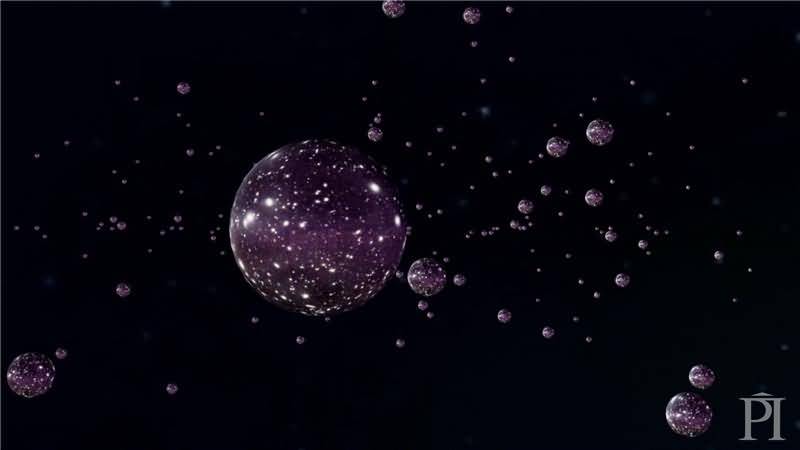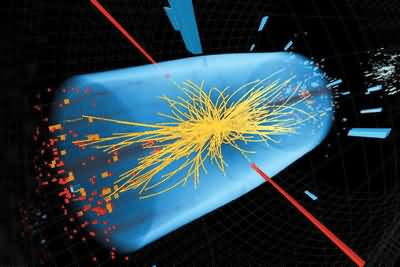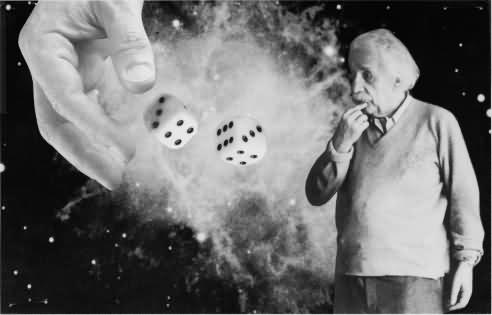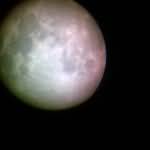Can Multiverses Be Tested? Bubble Universes!
Consider the moment of the big bang. At first, there was only a vacuum, seething with energy (dark energy, vacuum energy, inflation, or the Higgs field—these are profound concepts in astrophysics). Bubbles formed, like bubbles in boiling water in a pot.
Each bubble became another vacuum, but with less energy. This energy caused the bubbles to expand. Some caused other bubbles to collide with each other. It's possible that some created second bubbles. Perhaps the particles were few and far between, or perhaps they were very close together. Each of these bubbles could be a universe, and our universe could be one of these bubbles.
I've written so many "maybes," haven't I? This is the bubble multiverse hypothesis, which is impossible to test and therefore not fully within the realm of science, and which we might call metaphysical. You might try to slam me for my limited imagination, but you can't reach the truth with "maybes." Maybes are just there, and if they ever become testable or proven, they'll enter science. Otherwise, we'll just believe every "maybe." Anyway, back to the topic at hand...
When the theory of inflation is mentioned, the vacuum field becomes inevitable. Although it has been proven by gravitational waves (as I've noted in my recent articles, of course, it's shaky), there are those who reject it. In its simplest form, the theory of inflation is the expansion of the universe at tremendous speeds very shortly after the Big Bang. To put it numerically, it's the expansion of nanometer-sized spacetime to 250 million light-years in a trillionth of a trillionth of a trillionth of a second. For now, this seems to be the only way to explain many things for astrophysicists.
 Inflation theory is initially thought to be caused by the Higgs field, which exists in the vacuum. Actually, let me state this here. I haven't fully grasped the vacuum field and its negative pressure. I haven't even seen anyone explain it. If I can, I'll write a detailed article about them one day. Let's get back to the topic at hand. The Higgs field, at a non-zero energy level (0 being the lowest energy level), causes negative pressure, which creates the effect of reverse gravity. In other words, gravity in the repulsive force. Don't worry about how gravity can exist in a place with no mass. It can occur under negative pressure. And this reverse gravity continues until the Higgs field drops below zero energy. The rest is our classic story. Because the Higgs field is negative, it interacts with us, giving us mass, completing itself to zero energy, and the universe is formed. Naturally, there may be some things you don't understand; these are not easy topics. Feel free to ask me any questions. Never hesitate.
Inflation theory is initially thought to be caused by the Higgs field, which exists in the vacuum. Actually, let me state this here. I haven't fully grasped the vacuum field and its negative pressure. I haven't even seen anyone explain it. If I can, I'll write a detailed article about them one day. Let's get back to the topic at hand. The Higgs field, at a non-zero energy level (0 being the lowest energy level), causes negative pressure, which creates the effect of reverse gravity. In other words, gravity in the repulsive force. Don't worry about how gravity can exist in a place with no mass. It can occur under negative pressure. And this reverse gravity continues until the Higgs field drops below zero energy. The rest is our classic story. Because the Higgs field is negative, it interacts with us, giving us mass, completing itself to zero energy, and the universe is formed. Naturally, there may be some things you don't understand; these are not easy topics. Feel free to ask me any questions. Never hesitate.
Now that we've explained why the concept of a vacuum field exists, we've also explained why it leads to multiple universes. A vacuum field leads to the hypothesis of bubble universes. But it's untestable. So, it essentially remains a metaphysical concept. This is where Matthew Johnson and his team from the Joint Environmental Faculty come in. They explain that the research is about finding what's testable in this picture. Their first goal is to simulate two bubble universes in a vacuum, and then simulate their collision on a computer and what happens next. Of course, they won't be doing a detailed simulation, including atoms, stars, and galaxies. In fact, none of these will be present in the simulation. They predict that they will simply use gravity and the things that cause bubbles to form in a vacuum field, and that this will be sufficient. Otherwise, such a simulation would be extremely challenging in terms of processing power and cost. As you can see in my article here (Get Ready! The Universe Has Been Simulated!) How many months did it take to simulate the universe, which can be seen even on a supercomputer with 8,000 processors?
Normally, if two bubble universes collided, they think it would be visible either in the sky or in the microwave cosmic background radiation, and they'll use this simulation to figure out where to look. It certainly won't be a pointless exercise. We'll await developments.
Reference and further reading;
- Matthew C. Johnson, Hiranya V. Peiris, Luis Lehner. Determining the outcome of cosmic bubble collisions in full general relativity. Physical Review D, 2012; 85 (8) DOI: 10.1103/PhysRevD.85.083516
- Carroll L. Wainwright, Matthew C. Johnson, Hiranya V. Peiris, Anthony Aguirre, Luis Lehner, Steven L. Liebling. Simulating the universe(s): from cosmic bubble collisions to cosmological observables with numerical relativity. Journal of Cosmology and Astroparticle Physics, 2014; 2014 (03): 030 DOI: 10.1088/1475-7516/2014/03/030
- Carroll L. Wainwright, Matthew C. Johnson, Anthony Aguirre, Hiranya V. Peiris. Simulating the universe(s) II: phenomenology of cosmic bubble collisions in full General Relativity. submitted to arXiv, 2014 [link]
- Stephen M. Feeney, Matthew C. Johnson, Jason D. McEwen, Daniel J. Mortlock, Hiranya V. Peiris. Hierarchical Bayesian detection algorithm for early-universe relics in the cosmic microwave background. Physical Review D, 2013; 88 (4) DOI: 10.1103/PhysRevD.88.043012










A new development.
The Discovery of Gravitational Waves Was a Lie: http://erhankilic.org/post/kutlecekim-dalgalarinin-kesfi-yalan-oldu/